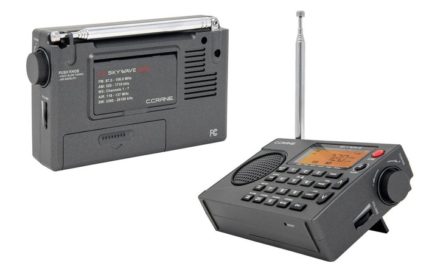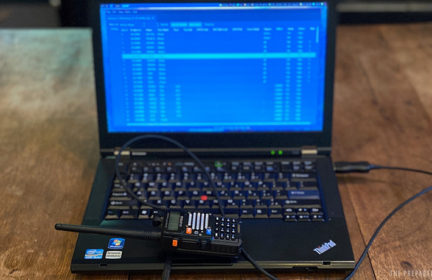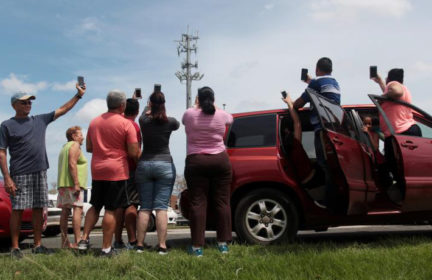What’s the best starter radio for a person who doesn’t have a lot of time to devote to ham?
I’m aware of the pages here that talk about HAM radios. I’m actually interested in learning about them and getting into them eventually, but I don’t have the bandwidth for for any complex or expensive radio project right now. I’m just trying to rustle up a basic emergency preparedness radio that doesn’t have a big learning curve. Is there a simple (simplest) version of HAM radios or should I just stick with NOAA type radios?
-
Comments (13)
-
Gideon ParkerStaff - December 13, 2020
I’m glad you want to learn about ham radio, it sure is a great prepping resource (which is why I got into it). Ham radio can be daunting both in knowledge complexity and in how much gear is out there.
I am like you though Jonnie, I wanted to get into ham very cheaply. That is why I only have the cheap less than $25 Baofeng UV-5R. I have put a little bit into accessories such as a better antenna for the radio, and a magnet mounted antenna for my vehicle. All of the other ham radio operators that I know have spent hundreds and thousands of dollars on all sorts of gear, but my sub $100 budget has gotten me everything that I have wanted to do with ham, and I’m happy.
For that $25, and maybe an hour or two you can get a radio, understand the basics on how it works, and listen into chatter around you. But I highly recommend getting your technician’s license. I used YouTube videos and hamstudy.org to learn all that I needed to take the test. You can find free ham tests in your area that they offer so often. With your license you can start talking on the radio, and that is the best experience and where you truly learn how to use a ham radio.
I love my Baofeng UV-5R. It has ham radio frequencies, FM and NOAA radio frequencies that you can tune into. It is simple, cheap, and extremely popular so that there are plenty of guides, YouTube videos, and people to teach you how to use it.
Let me know if you have any questions! I’d love to help how I can.
-
Jonnie PekelnyContributor - December 19, 2020
Hey, Gideon, the Baofeng does look nifty. I was wondering, how long did it take you to get the basic basics of how to use it, including passing the test? I’m thinking that I might want to take this up as a project to do and then review for TP — as a beginner learning ham. But, like I said, I don’t have time right now for a major rabbit hole that HAM seems to be. Also, I’m curious how you upgraded the antenna. I’m… let’s just say not very handy so I’m wondering if it’s something I’d be able to do.
-
Gideon ParkerStaff - December 20, 2020
It took me about a month of just doing my own study using YouTube videos and memorizing the test questions at Hamstudy.org. This was with maybe 30-60 minutes a day of looking over questions. They do have crash course classes that you can take (probably some virtually now) and they claim to teach you everything you need to know to pass your exam, in an afternoon. I haven’t taken one of those, so I can’t speak to them. Again though, it really is using the radio after you pass your test that really helps you understand how things work.
The antenna is super easy to swap out. I bought this super flexible one from https://signalstuff.com/ for $20. Just screw off the old one, and screw on the new one. Takes about 5 seconds, no tools or technical knowledge required.
-
Jonnie PekelnyContributor - December 21, 2020
I see that the TP ham radio page recommends a different Baofeng — the Baofeng BF-F8HP. What’s the difference between that and your model? Why not get the BF-F8HP?
-
Gideon ParkerStaff - December 21, 2020
The BF-F8HP is just the 3rd generation of the UV-5r. It has a bigger battery, and can output at 8 watts of power vs the 4 watts of the UV-5R. (https://xroadgps.com/baofeng-uv-5r-vs-bf-f8hp/ )
The UV-5R is less than $25 and the BF-F8HP is $80. I’d rather get three UV-5R’s. One for my BOB, one in my car, and one in my home for ever day use. I can also hand one to a friend or family member and talk to them.
If you have the money, or only want one radio, then go for the BF-F8HP. I’ve been able to do everything i’ve wanted, and reached everyone i’ve wanted with my little 4 watt UV-5R.
Start out with the UV-5R since it is so cheap, try it out, see what you can do with it. If you love it, great! Stick with it. If you love the hobby so much you want to upgrade, or need a bit more power because you just barely can’t reach the repeater, then you can upgrade, and your old UV-5R can be a backup or one for your BOB.
-
Jonnie PekelnyContributor - December 21, 2020
Oh, and also I’m wondering if the Baofang you have picks up NOAA?
-
Josh CentersContributor - December 21, 2020
Yes, BaoFengs will pick up NOAA stations.
-
Dog lover - December 20, 2020
I got two of the baofengs along with the better antennae’s and car chargers. I found an online study for the test and in a week was able to pass the practice test easily. This was a learning the test questions deal, not actually learning all about ham radio. Pretty easy though. I had the test scheduled locally at a fire department but had to deal with an emergency job that day for my business. For some reason I never got back into it or rescheduled. This thread has motivated me some again. I never downloaded the chirp program to set up my radios either. The radios have been sitting in one of my prepping boxes for too long now.
-
Gideon ParkerStaff - December 20, 2020
You’ll have to let us know if you break the radios out again!
-
-
Josh CentersContributor - December 21, 2020
I will second the UV-5R recommendation. Old hams despise them because they’re kind of lousy radios and can put out spurious emissions, but it’s the most accessible ham radio on the market (another reason some hams probably don’t like them). If you get pulled into ham radio you can always buy better equipment later.
We’re on the verge of putting out a new article on radio receivers that might interest you. I’ll post a link once we take it live.
-
Josh CentersContributor - December 22, 2020
Here is our guide to the best radios:
https://theprepared.com/gear/reviews/emergency-radio/
I strongly recommend the C. Crane Skywave SSB. $170 might seem like a lot for a radio receiver, but it has everything you need in a small, well-built package.
-
-
Seasons4 - December 22, 2020
It’s worth it to get your Technician license and to join a local radio club. You can find a club here: http://www.arrl.org/find-a-club
I’ve been a member of two amateur radio emergency preparedness groups in California and a member of a club (not emergency preparedness oriented) in Wisconsin. You generally meet friendly, quirky, knowledgeable, older people. In my experience, 2/3 are generally politically conservative and 1/3 are generally politically liberal.
In a world where we tend to live in echo chambers with often little first-hand contact with the “other” side, it’s good to have acquaintances on the “other” side. If SHTF, there are some radio club people I could visit where I would feel safe even if I disagreed with their politics.
Club members are often generous with their old equipment, selling it cheap or donating it to those entering the hobby. I’m being given a portable beam antenna that the owner no longer wants! I’m going out of my way to tour a club member’s “antenna farm” to subtly mend fences because I dropped him as a Facebook friend in the run-up to the U.S. election. He’s on my probable evacuation route.
There is also EchoLink, a software program that lets you talk with other hams on your computer or smartphone.
My thought would be to get the license first and network with other hams. The radio choice itself will probably follow from that. For example, in one California group, we were all encouraged to get the same model HT (handy talkie) radio for ease of programming and troubleshooting. Best wishes.
-
Gideon ParkerStaff - December 23, 2020
Great suggestion! Joining a club can be a great way to have people to talk to and learn from in person. Every ham operator that I have met was extremely nice.
-
-
- News for the week of 2025-07-07 - 6 days ago
- Fun ways to teach kids outdoor/survival skills - 2 weeks ago
- News for the week of 2025-06-30 - 2 weeks ago
- News for the week of 2025-06-23 - 3 weeks ago
- News for the week of 2025-06-16 - 3 weeks ago
This forum is heavily moderated to keep things valuable to as many people as possible. Full community policies are here. The basics:
- 1. Be nice to each other.
- 2. Stay focused on prepping.
- 3. Avoid politics, religion, and other arguments.
- 4. No unfounded conspiracies, fake news, etc.
- 5. Debate ideas, not people.


